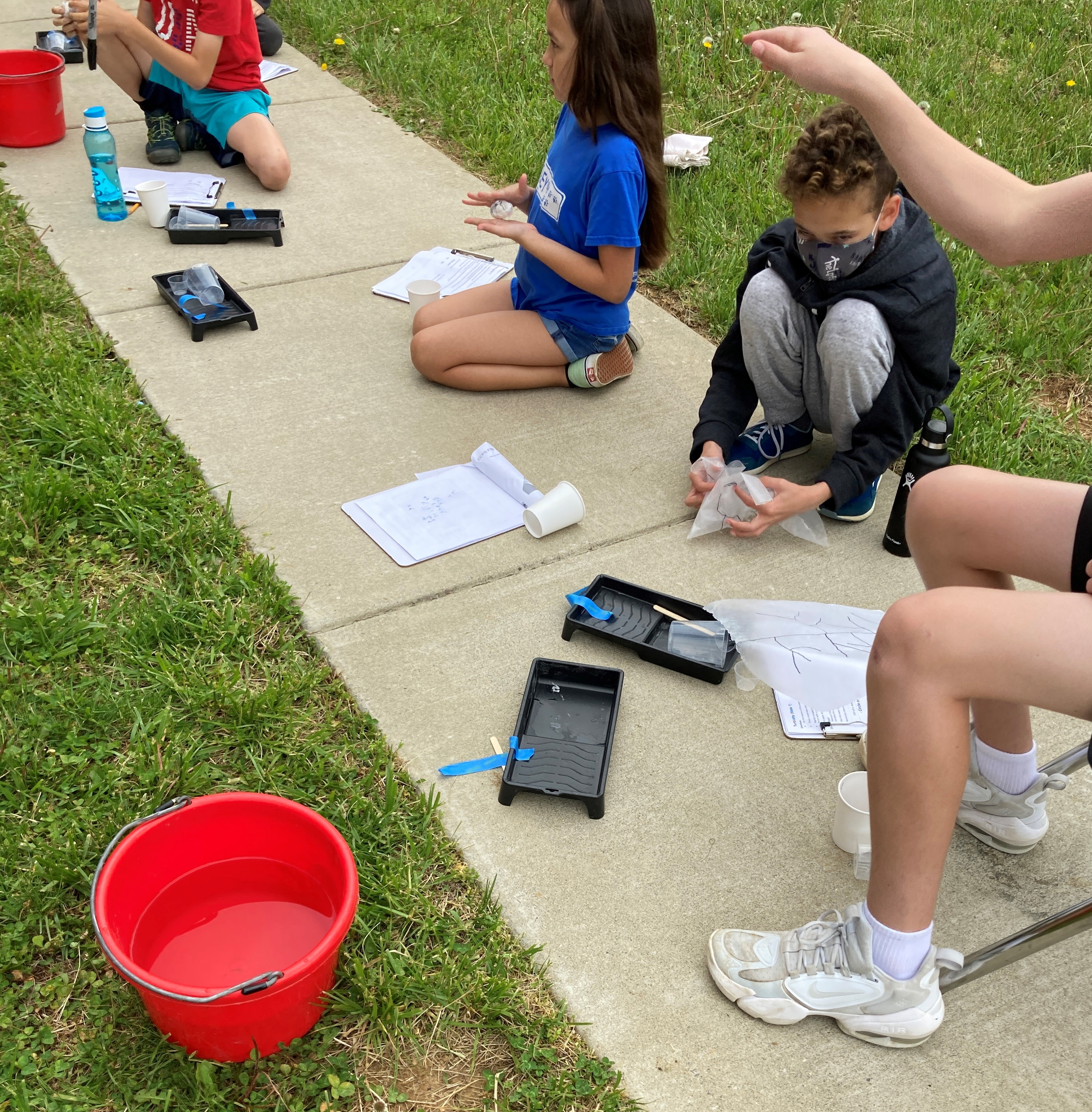Grade 5 Project
Driving Questions: How do I along with my family, neighbors, and community impact the Chesapeake Bay watershed? How do sediment and waste get into our waterways? How can we prevent this from occurring?
Project Elements
Issue Investigation Each content area focused on how erosion and pollution impact the watershed. In History/Social Science, students map their schoolyard area to determine the permeable and impermeable surfaces and how water flows over their schoolyard. With mathematics, students use the schoolyard surfaces map to find the area and perimeter of the map, they convert fractions to decimals and find the mean of their findings on permeable and impermeable surfaces. In language arts, students learned research strategies and used those skills in researching ways to prevent erosion and pollution from entering waterways. With science, students observed how the effects of erosion on their schoolyard, used levels to determine where water flows, and create erosion models to develop an understanding of the impact of erosion.
Field Investigation
Students visited Blandy Experimental Farm to study sediment and its impact on water. They analyzed various erosion models and studied turbidity.
Click on the links below for our field investigation lesson plans.
Blue - Brown River |
Erosion Models |
Land Use & Trees of Kenya |
Turbidity Engineering |
Action Project
Using the data from the field experiences, students created a public awareness campaign showing the impact of erosion and sedimentation within their watershed. They also created a plan to create a riparian buffer so that the impacts of erosion are lessened.
Synthesis and Conclusions
Students understand how erosion can be prevented. Specifically, plants can be put into place to stop the draining of sedimentation into streams.
During the 2020-2021 school year, we adjusted many of our field investigations for remote learning. We created investigation kits that contained materials for students to carry our hands-on investigations in their personal learning environments with virtual teaching. A video of the contents of the investigation kits can be found here.

This project was funded by a NOAA B-WET grant # NA18NMF4570315
Developing MWEE capacity through systemic, vertically aligned, integrated curricula, grades K-12

